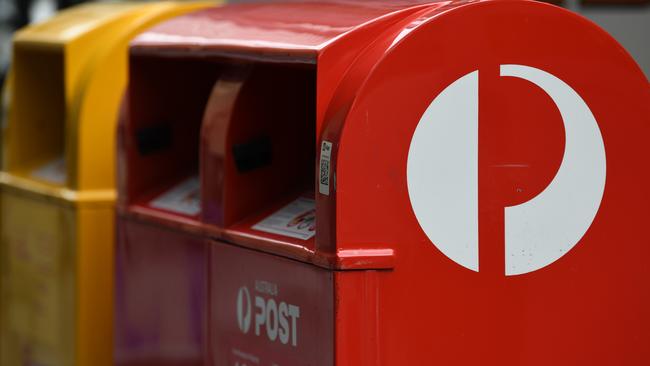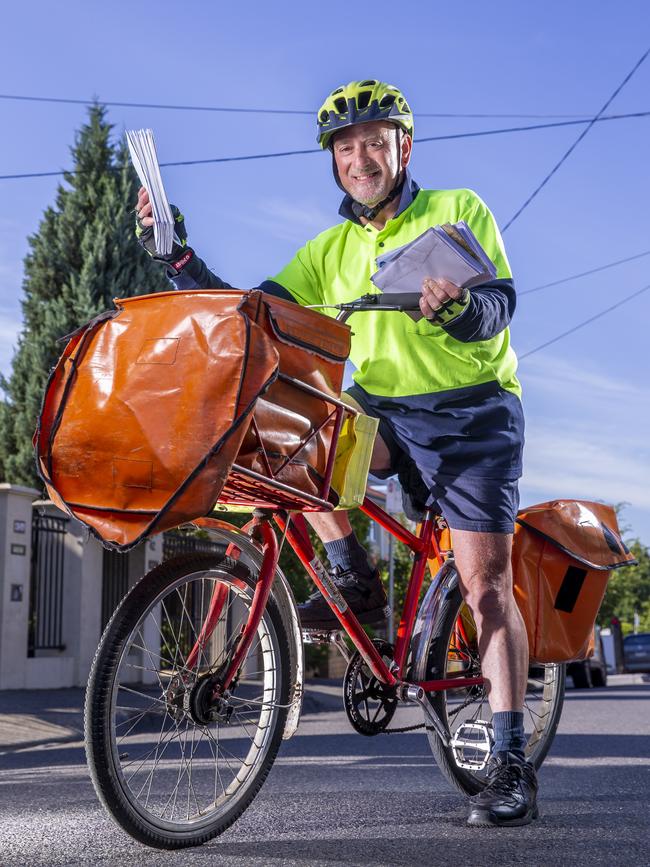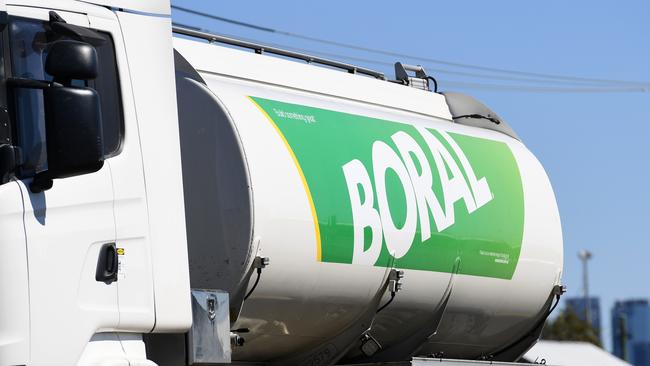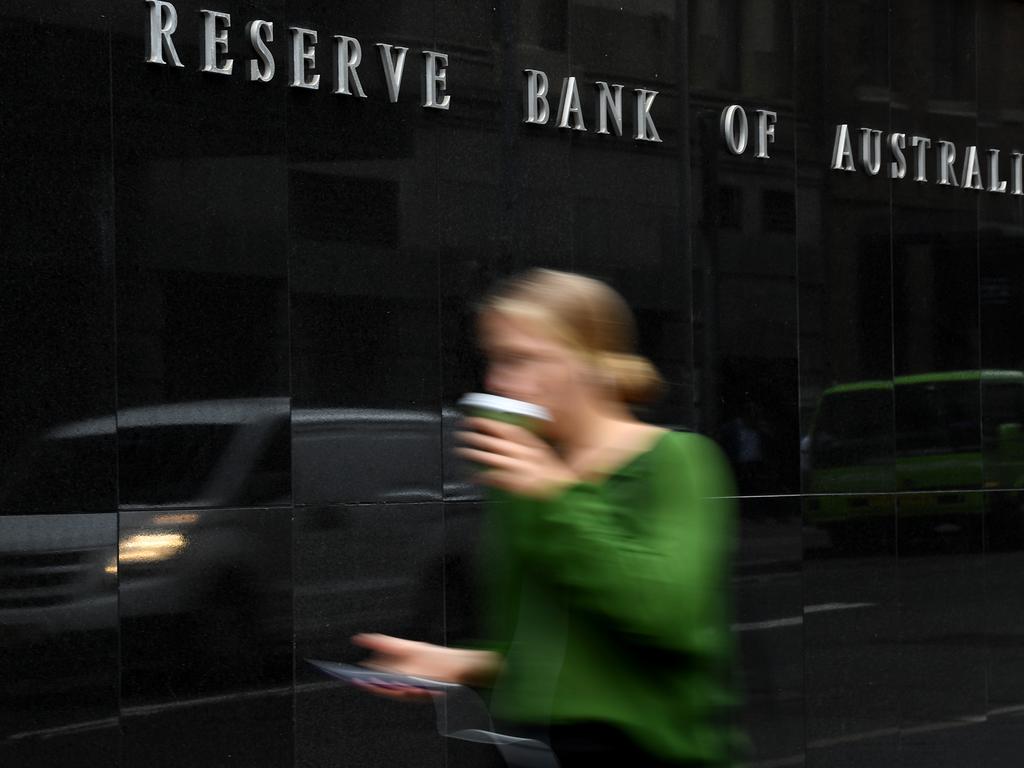
That’s the reality of Graham’s ambitious restructuring program dubbed Post26 now under way.
The urgency of the issue has been put into stark reality following a warning from Graham that Australia Post will deliver a loss this year, its first since 2015. It is possible more losses could follow in the years later, which could become an increasing political headache for the Albanese government.

The reason behind it is the accelerating losses across its structurally challenged letters business. The volume of mail it delivers is dropping off sharply and no one can do much about, but massive fixed costs of the post offices, staffing and delivery infrastructure continue to push higher.
However, the other side of the story for Australia Post is its booming parcels delivery business, although grinding costs and intense competition means parcels are no longer able to run fast enough to prop up the ailing letters business.
Australia Post just signed off on a December half profit of $23.6m, a collapse of 88 per cent from the same half a year earlier. Letters losses deepened to $190m for the first half, with revenue across the division down 5.7 per cent. Stamp prices at the start of the year rose 9 per cent to $1.20 to help ease some of the losses.
Letters revenue now makes up just 18.8 per cent of Australia Post’s annual revenue of more than $9bn, but costs (which are often shared with parcels) remain outsized.
Australia Post’s problems are not unique. Postal services from the US to Europe are in trouble or have been privatised.
Indeed, much of the pain for Australia Post has been delayed after former chief executive Ahmed Fahour made an early push in parcel delivery on an industrial scale.

Raised in Northern Ireland, Graham – a former logistics executive with Woolworths and, more recently, head of DHL’s vast Europe and Middle East operations – is not shying away from the monumental task that is coming.
“We are at the start of significant change,” Graham says.
“The good news is that we have a clear plan as to what we need to do.”
Post26 centres around growing in e-commerce delivery, moving to a more digital-focused organisation, creating a sustainable letters business and improving culture and leadership.
A big part of this will involve winning over customers, licensed post offices, unions and most importantly the owner – Canberra. Graham needs them onside to help Australia Post in its journey to get back on a financially sustainable footing.
Outsiders see that deep cuts will have to be made to Australia Post’s 35,000 workforce, as well as a shrinking of its property and post office footprint. This is already happening with the trimming of staff across its corporate operations. The business will also have to dramatically simplify the number of products, including mail options it has on offer, while it is likely to reduce the frequency of some letter runs.

Graham won’t be drawn on cuts or other specific moves, but acknowledges that it will be a “complex road” going forward.
“I’m confident that with the right support, we’ll be delivering a financially sustainable Australia Post in the coming years,” he says.
Graham has softened the path for staff.
He has just signed off on a 6.1 per cent pay rise enterprise agreement with staff and, while the increase is now coming through the cost line, only some of it will be clawed back from productivity gains. Graham has pledged to continue to protect front line staff from the impact of inflation, but there will be a need for savings elsewhere to keep on top of the rises.
Inflation ‘yet to peak’
New Boral boss Vik Bansal reckons the worst of the inflation peak is yet to hit, with “trailing costs” now being passed through the economy.
Other bosses including Amcor’s Ron Delia, have also signalled their caution about inflation, claiming it is still endemic through the economy. This is giving additional weight to the Reserve Bank’s threats this week to push through more interest rate hikes in coming months.

Bansal is at the front line of inflation, as a manufacturing boss he has seen a 54 per cent jump in energy costs in the past six months due to gas and electricity price rises. He is bracing for more to come, but doesn’t want to give his hand away, given talks are ongoing with energy suppliers.
The way Bansal sees it, Australia is still in the middle of its inflation cycle.
“My sense is we haven’t seen the worst. I think there’s a bit more to go in the second (June) half. And then it probably flattens and goes down”.
Bansal is seeing the trailing effect of inflation. Even with headline energy costs coming down a little, the full impact of inflation “is still to come in my mind, because everybody has to put their costs through the system”.
This includes supplier costs, wages, raw material costs and industrial equipment prices that are still working their way through the system as well as wages.
In pushing through a quarter of a percentage point rate rise this week, RBA governor Philip Lowe didn’t want inflation to become entrenched in the economy, and this meant that more rate rises were coming in the next few months. Lowe also said he was also paying close attention to the evolution of labour costs and how businesses were passing on price rises. Currently, inflation is running at more than a three-decade high of 7.8 per cent and Canberra hopes it is on the way down.

Amcor’s Delia tells The Australian: “It does seem like inflation has accelerated in Australia”. “What impact that has on the consumer is yet to be seen”.
Amcor, ranks as one of the world’s biggest packaging companies and was an early mover on price rises. Indeed it has pushed through the equivalent of $3bn in increased raw material and other costs to customers over the past 18 months. Delia says in North America where Amcor generates the bulk of earnings Delia is cautiously optimistic that inflation has peaked, particularly with cost of raw materials including oil and resin coming off. “Inflation prices are still rising, albeit at a slower rate than they have been rising yet,” he says of the US economy.
Boral’s Bansal says the labour market remains very tight – particularly in competition for truck drivers – but there are signs conditions have eased slightly with availability of workers in some areas.
Boral shares surged earlier Wednesday after the company delivered a substantially better-than-expected underlying profit of $57m for the December half. The profit result was helped by higher sales volumes of its concrete and building materials products. But importantly, a round of price increases pushed through late last year seemed to be sticking. Going back years, Boral had a patchy record on pricing, with the company traditionally chasing sales volume over profit. Boral shares closed up 12.8 per cent at a 12-month high of $3.97.
Bansal said he wasn’t walking away from price hikes, saying additional costs would continue to be passed onto the customer as they arise.

“At the end of the day, somebody has to pay for inflation. Either the shareholders pay, or the market. And what we are trying to do is no different to any other company, taking that inflationary pressure back to the market”.
Bansal took charge of a vastly slimmed down Boral last October. The building materials company had long disappointed and in recent years been forced to walk away from a costly global expansion, particularly in North America.
Kerry Stokes’ listed Seven Group has been driving the shake-up after tightening its grip around the company to the point where it holds a near 72 per cent stake. Seven Group chief executive Ryan Stokes is chairman of Boral and Bansal is his hand-picked executive to undertake more restructuring.
Bansal joined Boral just four months ago from Sanjeev Gupta’s steel business InfraBuild and before that with listed industrial waste major Cleanaway. The last two years under former boss Zlatko Todorcevski has seen Boral undertake billions of dollars in asset sales, and much of this has gone back to shareholders in the form of special dividends.
Bansal believes it is still several years before Boral hits its full potential.
“It is a three to four year journey to get to the level where Boral should be performing against its competitors and peers around the world. But the core remains very good,” he says in an interview.
Some of this will require investment to rebuild its Australian operations across cement, quarries and bitumen – all producing raw materials to capture the ongoing boom in infrastructure spending. Looming investment spend, and ongoing balance sheet repair, was behind Boral’s decision to not pay a dividend for the December half.







Australia Post chief Paul Graham has a monumental challenge ahead and, while no one is ready to talk openly about it, it is going to involve significant pain, including job cuts and closures.